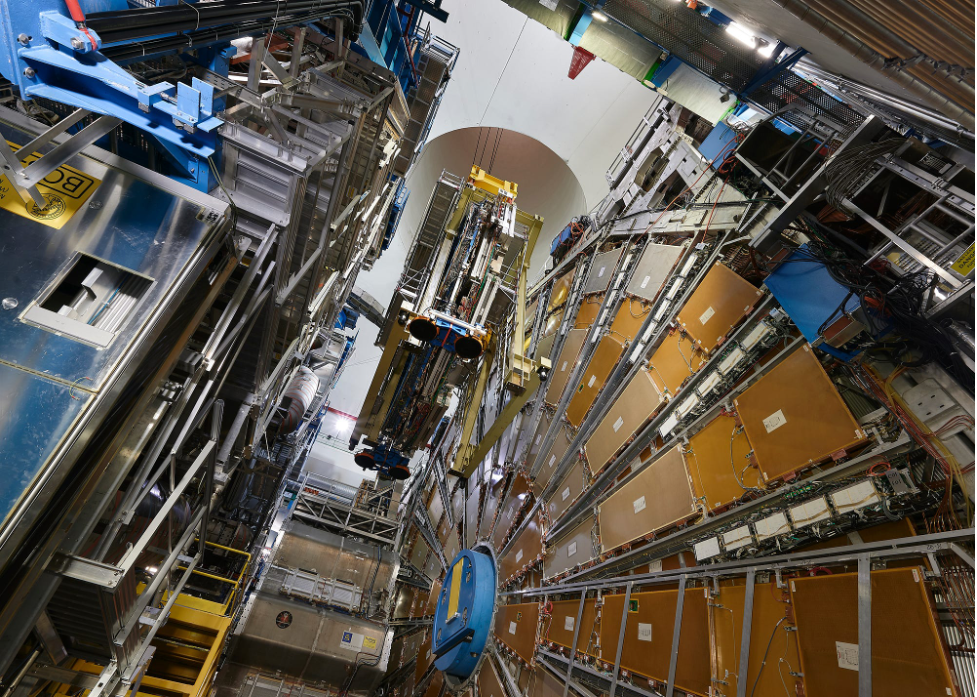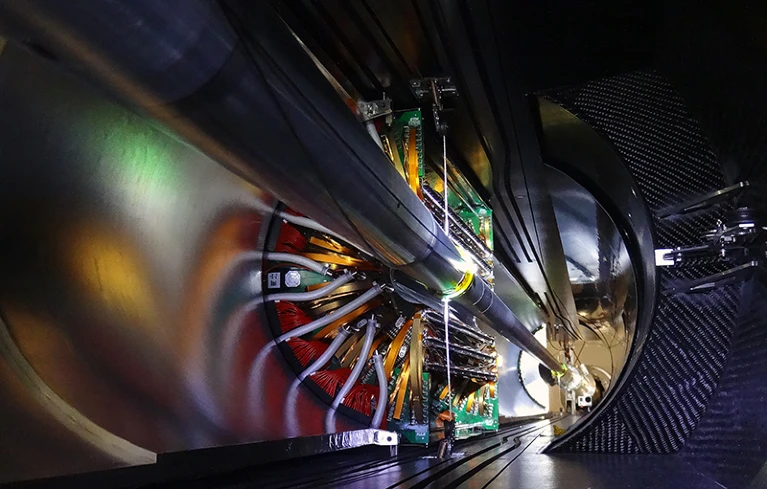Activities
High Energy Physics
Innovate in AI to discover fundamental physics using the Large Hadron Collider.
Particle physics, whose goal is to elucidate the subatomic structure and interactions of matter, is on the precipice of a new era of intensified particle beams, improved detector resolution, and burgeoning data rates. The LHC is the world’s most energetic particle collider where, in 2012, the Higgs boson was discovered by the ATLAS and CMS Collaborations, leading to the 2013 Nobel Prize in Physics. The current and future LHC data is critical to improving our understanding of the origin of dark matter and the mechanism of electroweak symmetry breaking that shaped our universe one picosecond after the Big Bang.
At the Large Hadron Collider (LHC), the challenge of processing data is daunting. With future aggregate data rates exceeding 1 petabit per second, the data rates at the LHC exceed all other devices in the world. The aim of A3D3 is to build a series of tools that will enable the processing of all of this information in real-time using AI. Through the use of AI, A3D3 aims to perform advanced analyses, such as anomaly detection, and particle reconstruction on all collisions happening 40 million times per second!
Highlighted Projects
[Artificial Intelligence at the Edge of Data Creation] Protons delivered by the LHC are made to collide every 25 ns and collected by detectors such as ATLAS and CMS. Due to the extremely high frequency of 40 MHz at which proton bunches collide, the high multiplicity of secondary particles, and the large number of sensors, the detectors have to process and store data at enormous rates exceeding 100 Tb/s. A3D3 researchers aim to bring AI to data acquisition and enable advanced processing in ATLAS and CMS hardware triggers with field-programmable gate arrays (FPGAs), as well as on-detector processing with application-specific integrated circuits (ASICs). One exciting prospect is the use of modern AI “anomaly detection” methods in the CMS and ATLAS triggers. These triggers could help uncover new physics that is hiding from existing traditional triggers, and they are made possible only through the use of AI and FPGAs in tandem. A3D3 HEP experts collaborate closely with targeted systems and HAC experts to pioneer the technology advancement in AI at the edge.

[Heterogeneous Computing Powered Discoveries] Daunting data rates and volume at the LHC motivate new approaches that take advantage of more efficient heterogeneous computing platforms, such as GPU-coprocessors and field-programmable gate arrays (FPGAs). A3D3 researchers develop and deploy heterogeneous computing platforms with an “as-a-service approach” as a scalable, flexible, and economical solution for large experimental data processing. A3D3 HEP researchers develop this approach for the LHC experiments, in collaboration with neuroscience and MMA domain scientists. A3D3 HEP researchers also push the frontier of efficient, hardware-friendly AI algorithm development with HAC experts.

Facilities

ATLAS is the largest general-purpose particle detector experiment at the Large Hadron Collider, a particle accelerator at CERN in Switzerland.

The Compact Muon Solenoid (CMS) is a general-purpose detector at the LHC, more compact and has a stronger magnetic field.
